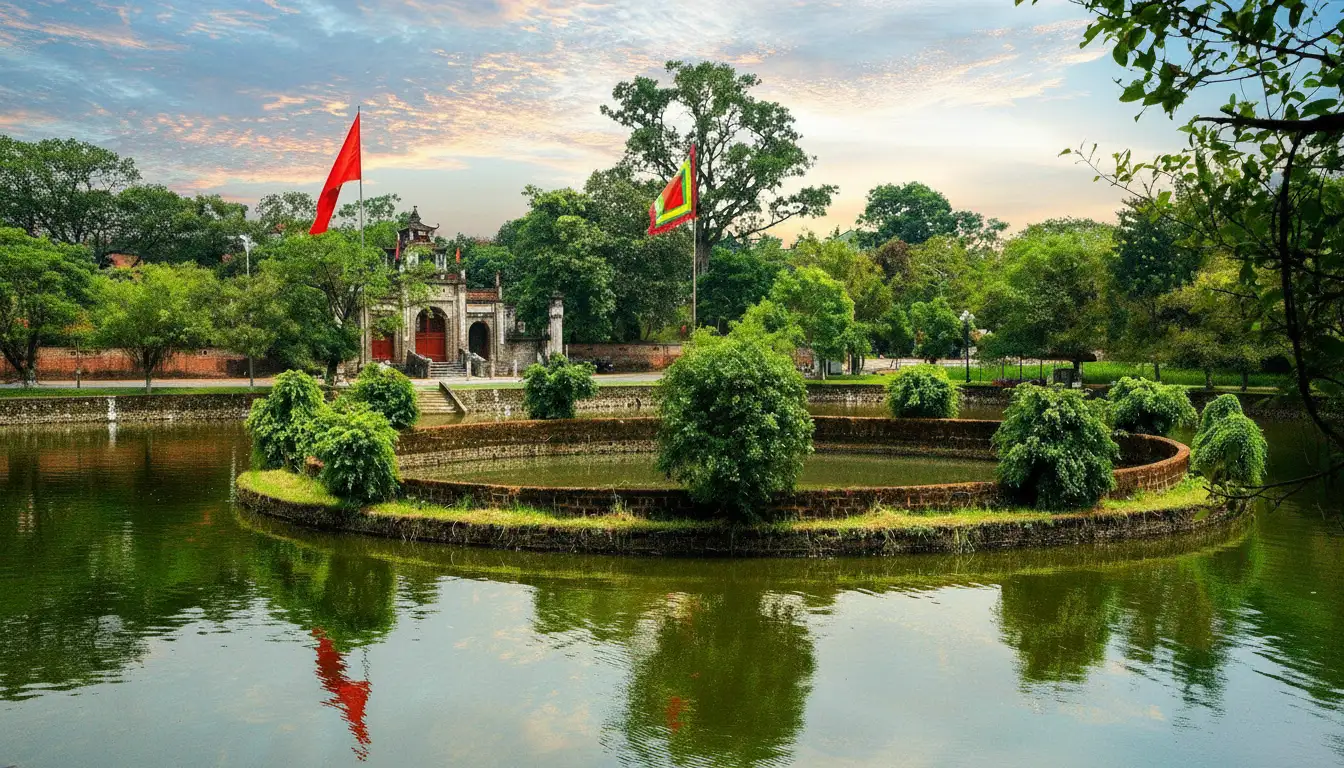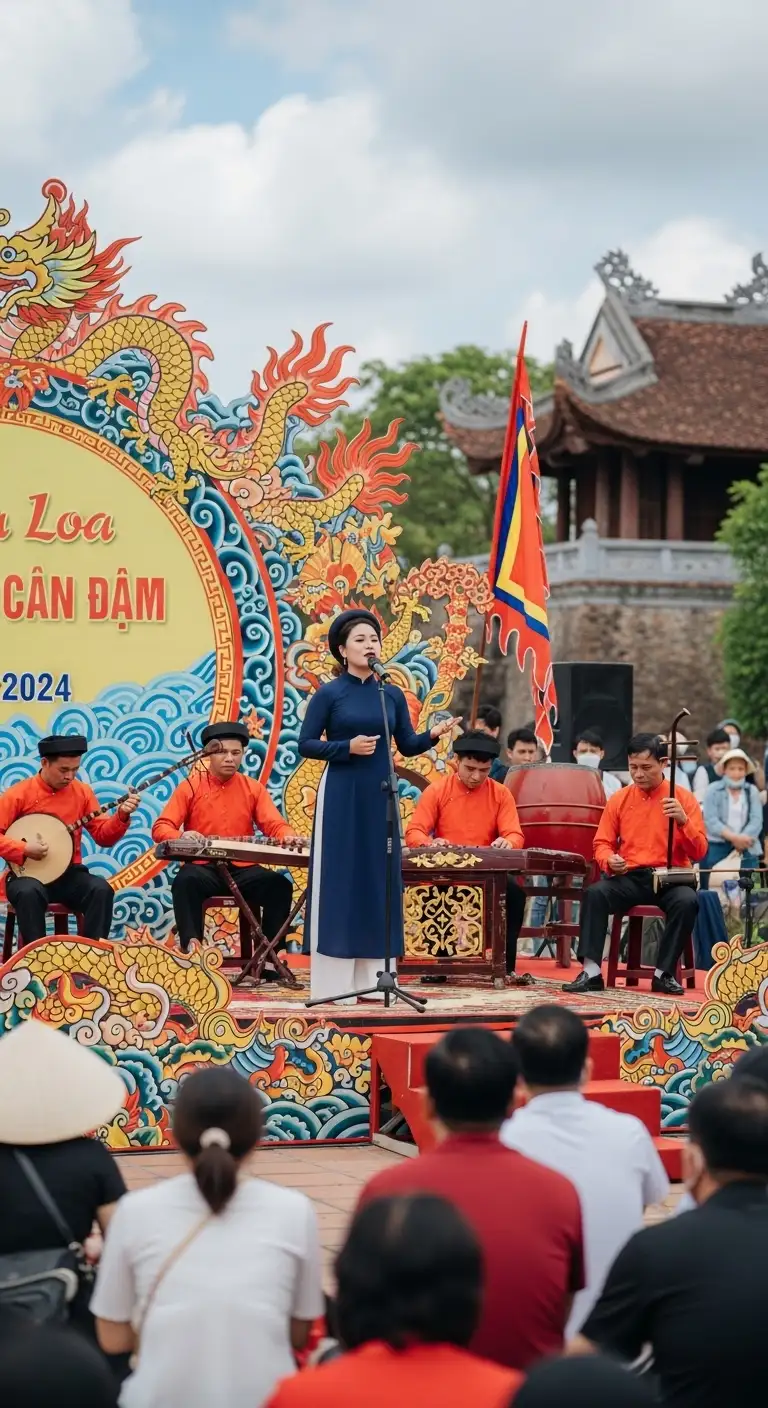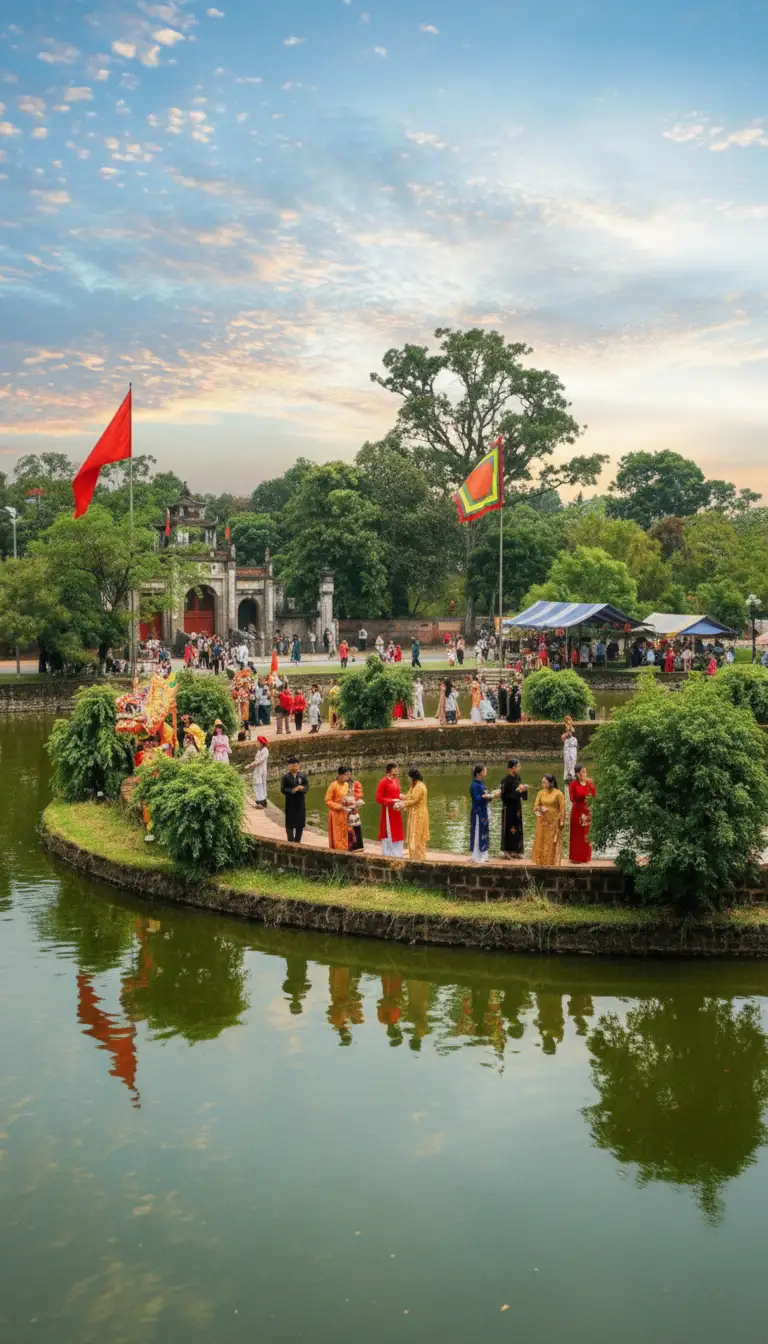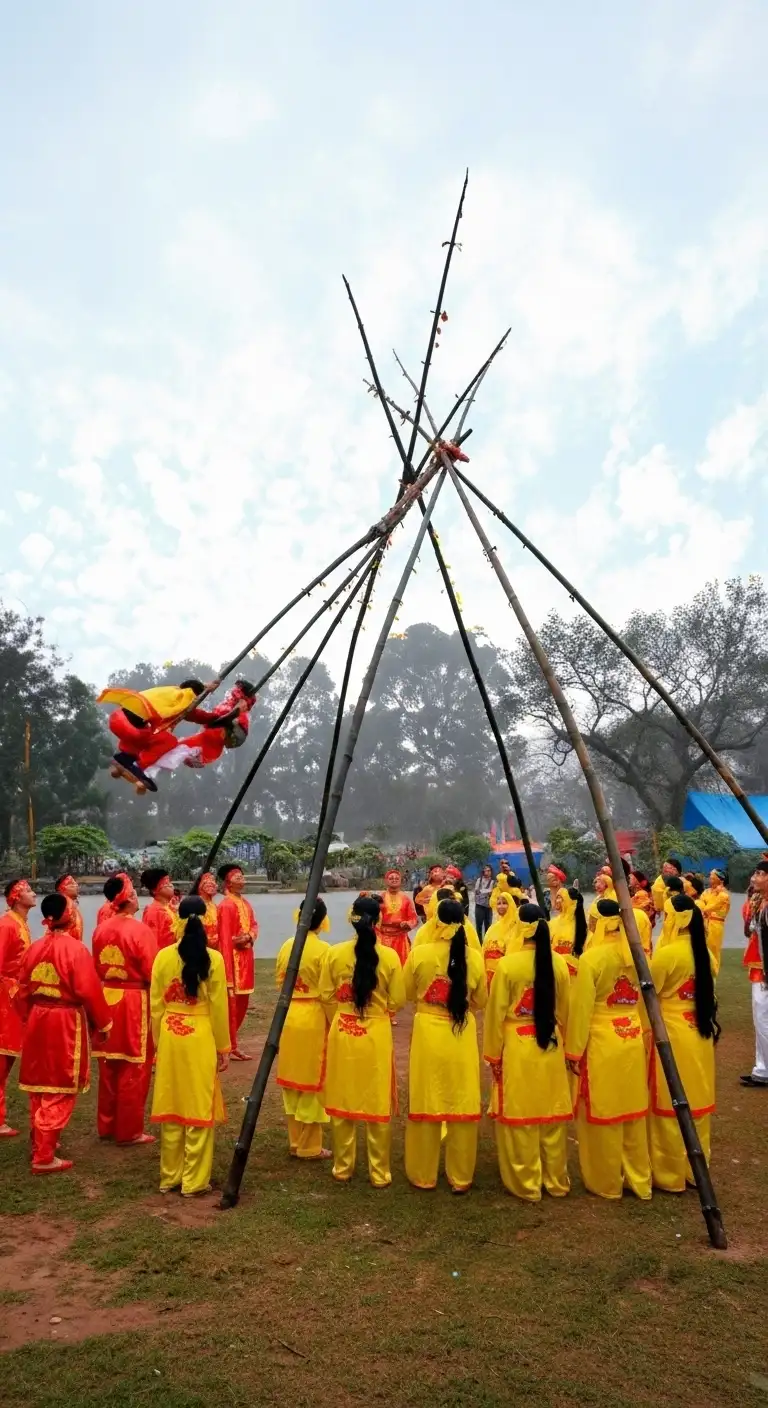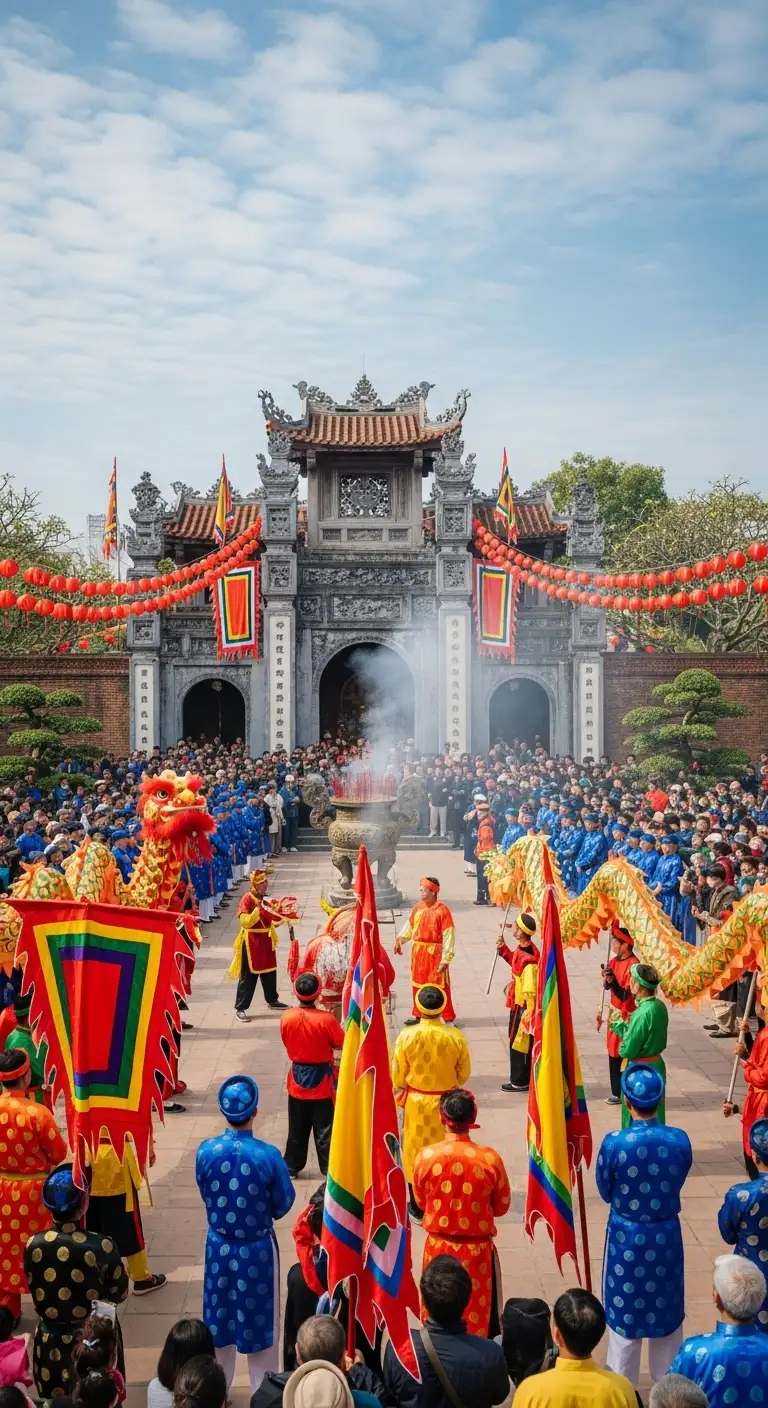Quick Facts
| Data Field (Title) | Content | Icon/Note |
|---|---|---|
| Official Vietnamese Name | Lễ hội Cổ Loa | Also known as the Cổ Loa Citadel Festival. |
| Location | Cổ Loa Citadel and Temple, Đông Anh District, Hanoi, Vietnam. | The site of the capital of the ancient Âu Lạc State (3rd Century BCE). |
| Date | 6th day of the 1st Lunar Month (Main Day) | The festival typically lasts until the 16th or 18th day of the 1st Lunar Month. |
| Significance | Commemorates King An Dương Vương, who founded the Âu Lạc State and built the legendary Cổ Loa Citadel (Snail Citadel). | A major festival of the Bát Xã Loa Thành (Eight Communes of Loa Thành). |
| Cultural Heritage | Recognized as a National Intangible Cultural Heritage of Vietnam (2021). |
I. Overview and Historical Context
The Oldest Capital City
The Lễ hội Cổ Loa is a traditional spring festival that celebrates the foundational history of the Vietnamese nation. It is centered around the ancient Cổ Loa Citadel, which served as the capital of the Âu Lạc State over 2,000 years ago under King An Dương Vương. Hailed by archaeologists as the oldest and largest ancient fortress in Vietnam, Cổ Loa is rich in history and legend.
The Myth of the Magic Crossbow
The festival honors King An Dương Vương and the mythological stories connected to the citadel:
The Golden Turtle (Kim Quy God): Legend says a golden turtle spirit helped the King build the citadel in a unique spiral shape (hence the name “Snail Citadel”). In gratitude, the turtle gifted the King a magic crossbow trigger that could shoot thousands of arrows at once, making the fortress invincible.
Princess Mỵ Châu: The story takes a tragic turn with the King’s daughter, Princess Mỵ Châu, who was tricked by her foreign husband, Trọng Thủy, into revealing the secret of the magic crossbow, leading to the King’s downfall and the loss of the state.
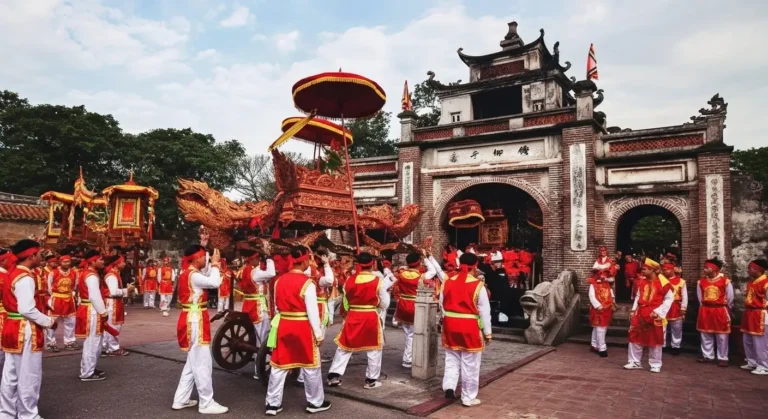
II. Festival Activities
The festival is a solemn yet magnificent event, performed jointly by the Eight Communes (Bát Xã) that surround the ancient citadel.
1. The Grand Procession (Rước Văn)
The most solemn and highly anticipated event is the procession of the ceremonial writings (Chúc Văn), which are carried to the Thượng Temple (Upper Temple) dedicated to King An Dương Vương.
Solemnity: A delegation from the main village, Cổ Loa, dressed in elaborate traditional attire and carrying flags and fans, escorts the sacred writings to the temple.
Uniting the Communes: Simultaneously, the other seven communes participate in a massive procession of deities, carrying the palanquins and symbols of their own tutelary gods to the Thượng Temple to pay tribute to the founding King. This grand convergence of all eight villages symbolizes community solidarity and collective reverence.
2. Rituals and Commemoration
Worship: The main ceremonial rites involve incense offerings, sacrifices, and solemn prayers by the village elders, asking the King and the deities for peace, prosperity, and a bountiful harvest in the new year.
Honoring Mỵ Châu: A separate ritual is often held at the temple dedicated to Princess Mỵ Châu, built near the Trọng Thủy – Mỵ Châu Well, where her tragic story is commemorated.
3. Traditional Folk Games
To celebrate the spring and the New Year, the festival includes many entertaining folk games and cultural activities:
Wrestling (Vật)
Traditional Theater and Singing (Ca Trù)
Bamboo Swings
Crossbow Shooting (Archery)—a nod to the legend of the magic crossbow.
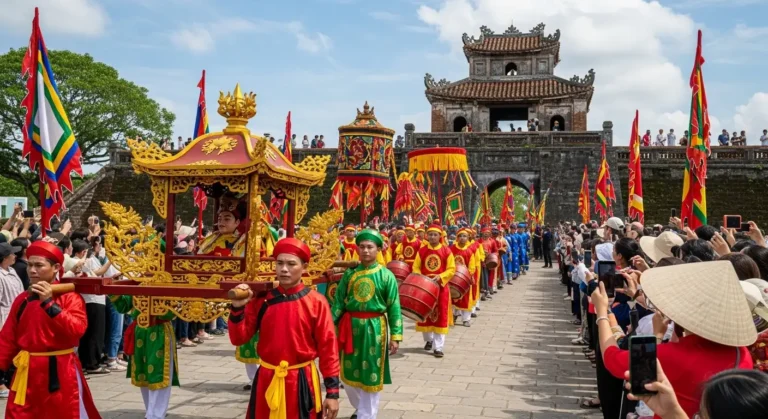
III. Visitor Information
| Guide Field | Details |
|---|---|
| The Saying | Locals adhere strictly to the festival, encapsulated in the saying: "One may leave kids after death, but cannot forget the 6th of the first lunar month." |
| Visiting the Citadel | The Cổ Loa Citadel is a historically rich site year-round, but visiting during the festival offers the unique opportunity to witness its spiritual and cultural life. |
| Getting There | Cổ Loa is located approximately 17 km north of Hanoi's city center. It is accessible by local bus or taxi/private vehicle. |
| Note for Tourists | The main procession on the 6th day is extremely crowded and involves slow-moving, traditional rituals. Visitors should respect the solemnity of the event, particularly within the temple grounds. |
